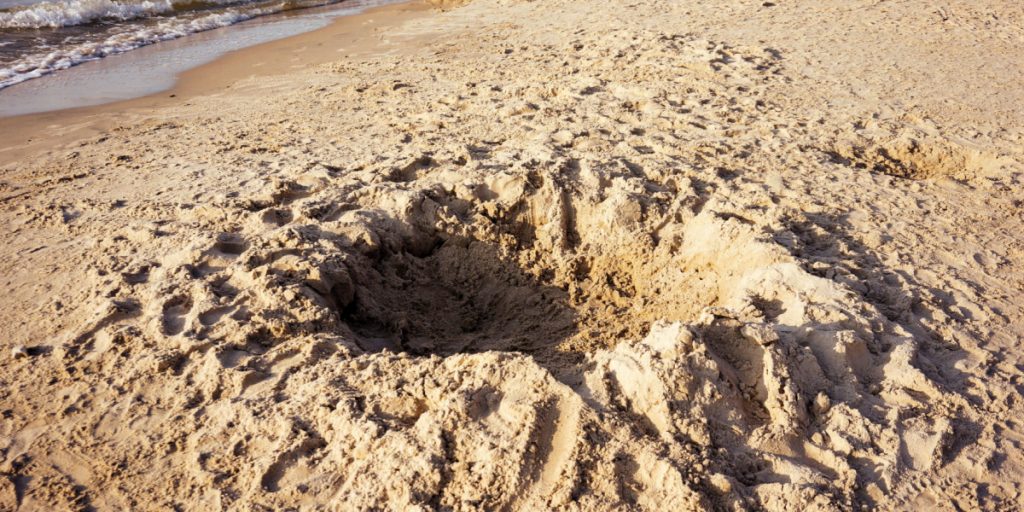A recent beach tragedy shifts focus from shark fears to the lesser-known risks of sand holes.
Others are reading now
Playing in the sand is a fun part of going to the beach for many kids. However, a sad event last week showed the dangers of digging holes in the sand, even small ones. A 7-year-old girl in Florida died when the 5-foot hole she and her brother were digging collapsed on them. Despite quick efforts to save them, the girl passed away in the hospital.
The Tragic Reality of Sand Collapses
This heartbreaking event is not an isolated case. Each year, a number of lives are lost due to sand hole collapses. For instance, a 17-year-old boy in North Carolina and a 14-year-old in Minnesota both died in similar circumstances.
From 1990 to 2007, the U.S. witnessed 52 instances of dangerous sand collapses, with more than half resulting in fatalities, according to a study published in the New England Journal of Medicine.
Capt. Butch Arbin of the Ocean City Beach Patrol in Maryland, with five decades of rescue experience, has witnessed firsthand the peril of sand play. He starkly warns parents of the potential danger, stating, “Parents actually may be digging their own kid a grave and don’t even realize it.”
Also read
While shark attacks are often more feared at beaches, sand holes have proven to be equally fatal. The same period saw 31 deaths from sand collapses compared to 24 from shark attacks.
The Science Behind the Danger
The deceptive nature of sand contributes significantly to its danger. Physicist Karen Daniels from North Carolina State University points out that sand can seem solid, especially when wet, as water helps bind the sand grains together. This property allows for the construction of sandcastles and digging deep holes. However, this apparent sturdiness is misleading. A slight disturbance can cause a sand structure to collapse, with the potential to trap and bury someone underneath.
The behavior of sand, capable of flowing like a liquid and then suddenly solidifying, poses a unique risk. In a collapse, sand grains move rapidly, bouncing off each other before settling into a dense, compact state. This compaction can be fatal, as highlighted by Christopher Moir, a pediatric trauma surgeon. He describes the lethality of sand, emphasizing how it can encase and suffocate a person by preventing chest and diaphragm expansion.
Moreover, the risk is exacerbated by the weight of wet sand, which can weigh as much as 130 pounds per cubic foot, significantly hindering rescue efforts. Moir, who published a report on sand burial deaths, calls for greater awareness of the dangers of sand play in public health and safety measures to prevent such tragedies.


